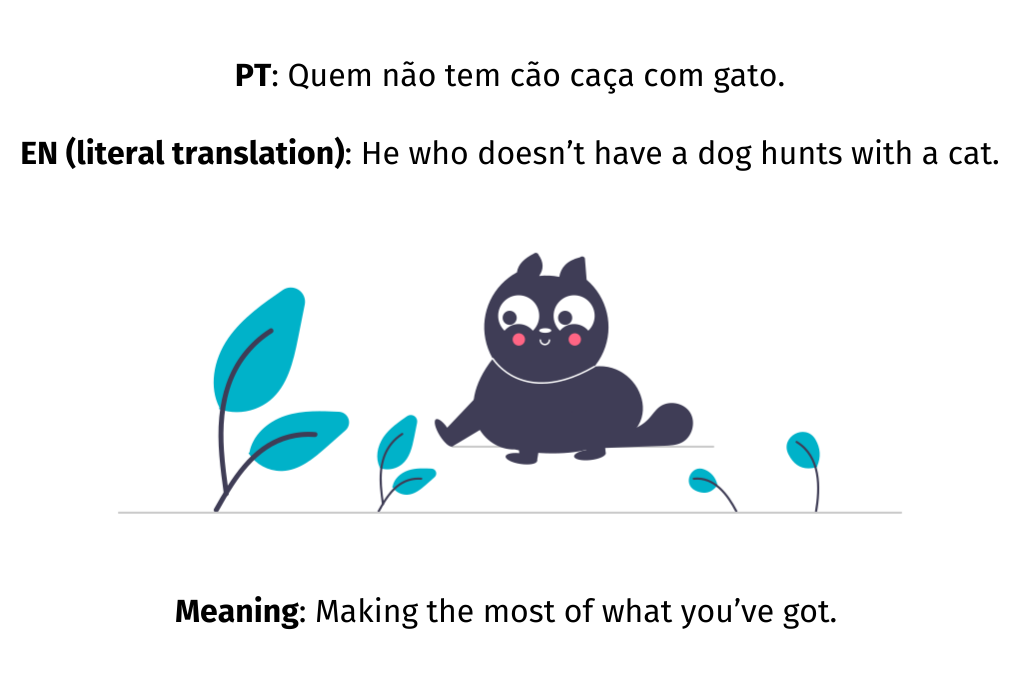
Remember how we said that slang translating can be a real headache? Well, the “fun” doesn’t stop there. Another localization challenge is translating idioms, which are expressions unique to a specific culture or language. Unfortunately, they rarely translate directly without losing their meaning or impact.
Idioms are culturally bound expressions. They often reflect the history, values, and quirks of a particular group of people. A direct translation into another language may not carry the same meaning because idioms are figurative, not literal. So how do we translate them?
In this article, we’ll share some strategies to approach this task.
Strategies for translating idioms
When you translate idioms, you need to find a balance between creativity and cultural awareness, and have a deep understanding of the source and target languages. Here are some practical examples and insights to better understand idioms and how to translate them.
1. Finding an equivalent idiom
This is often the best solution when translating idioms. Finding an idiom in the target language that conveys the same meaning as the original ensures that the localized version retains both the figurative meaning and cultural nuance.
Let’s take the English idiom “burning the midnight oil” (meaning working late into the night). It can be translated into Spanish as “quemar el aceite de medianoche,” which is an identical idiom in form and meaning.
However, this strategy is pretty limiting if the two languages do not share similar metaphors or cultural experiences. Which brings us to the second strategy.
2. Finding an idiom with similar meaning
This process involves substituting the original idiom with one from the target language that conveys a similar meaning but is expressed differently in terms of imagery or metaphor. It works when a word-for-word translation is impossible due to cultural differences, but the general meaning can still be conveyed through a different idiom.
For instance, the English idiom “to hit the nail on the head” (meaning to be exactly right) can be translated into Italian as “centrare il bersaglio” (to hit the target), which uses a different metaphor but maintains the same meaning.
Unfortunately, finding a direct equivalent isn’t always straightforward. Some idioms simply may not have direct counterparts in the target language, and the closest match might not fully convey the same feeling or nuance.
3. Explaining the meaning
As mentioned, sometimes, there’s no idiom in the target language that matches the original. In these cases, explaining the meaning of the idiom is a practical solution. You can use this approach in technical, educational, or formal contexts where clarity is more important than creativity.
For example, the German idiom “Tomaten auf den Augen haben” (literally, “to have tomatoes on your eyes”) means someone is being oblivious to something obvious. Instead of translating it directly, it could be localized into English as “to be oblivious” or “to miss the obvious.”
Explaining an idiom may, of course, cause a loss of color or cultural flavor, especially if the idiom plays a key role in the text’s tone or character. In some cases, it can also lengthen the text and disrupt the flow. This can be problematic in creative writing or marketing copy.
4. Opting for neutral language
In certain cases, especially in formal or technical content, you may not even have to struggle to find an equivalent idiom in the target language. The use of idioms may simply not be appropriate in the first place.
Instead of translating the idiom, you can opt for neutral language that conveys the message in a straightforward way. For example, instead of translating “a blessing in disguise” literally, you could simply write “a hidden advantage” or “a positive outcome.”
5. Preserving the idiom with added context
If the idiom plays an important role in the original content (e.g., in literature or creative writing), some translators choose to keep the idiom and add explanatory context. This way, you maintain the cultural richness of the original text while ensuring the target audience understands the expression. For instance, if you’re translating a novel, you could translate an idiom and follow it with a brief explanation or use footnotes.

6. Using omission
Alas, if none of the suggestions above is to your liking, omission may be your last resort. Omission involves leaving out the idiom entirely when it has no close equivalent in the target language, and its meaning cannot be easily paraphrased or compensated for without confusing the audience or overburdening the text.
This strategy is sometimes the most practical when the idiom is not crucial to the overall meaning of the text. For example, in legal or technical translations, where clarity is paramount, omitting an idiom that could confuse or mislead the reader may be the best approach. Another use case could be in localization of content for an audience unfamiliar with the cultural reference embedded in the idiom.
How to choose the right strategy
When deciding which strategy to use in idiom translation, ask yourself these questions:
- What is the core meaning of the source idiom?
- Is there an equivalent idiom in the target language?
- Does the target audience share the same cultural references as the source language?
- Will the idiom make sense to the target audience?
- What is the purpose and context of the text?
- Will paraphrasing or neutral language affect the impact? And does it matter?
- Is the idiom essential to the text’s meaning, or can it be omitted?
By asking these questions, you can make more informed decisions about which strategy to go with. Remember, when working in localization, the goal is not just to transfer words but to convey the underlying message and emotion behind the text.